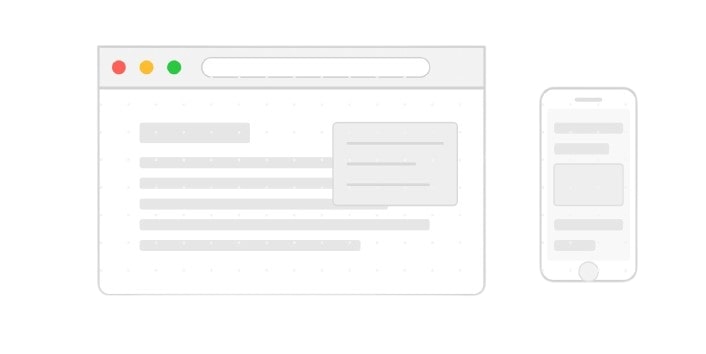
Posted: 3rd March 2025
Web development testing has undergone a significant transformation in recent years. As applications grow more complex and user expectations continue to rise, the testing landscape has adapted with new approaches, tools, and methodologies. In this post, I'll explore the current state of testing in web development as we navigate through 2025, highlighting the shifts that have occurred and the practices that have proven most effective.
The Shifting Testing Paradigm
Testing is no longer an afterthought in the development process. Modern development teams have embraced a "shift-left" approach, where testing begins early in the development cycle. More importantly, we're witnessing the rise of what many call "shift-right" testing—continuous validation in production environments with real users and traffic patterns.
The most notable change I've observed is how testing responsibilities have expanded beyond dedicated QA teams. Today's developers are expected to write and maintain tests for their code, while specialized testing engineers focus on building robust testing infrastructure and addressing complex testing challenges.
"The best testing strategy in 2025 isn't about choosing the right tools—it's about creating the right culture. When testing becomes everyone's responsibility, quality improves exponentially."
Current Testing Best Practices
Several testing practices have cemented their place in the modern web development workflow:
Test-Driven Development (TDD) with a Twist
Traditional TDD has evolved into what some call "behavior-driven development plus" or "specification by example." Developers write tests that describe the behavior of features from a user's perspective, but with additional context about business value and technical constraints.
Component-Based Testing
With component-based architectures dominating web development, isolated component testing has become essential. This approach allows teams to validate individual pieces of UI independently before they're integrated, catching issues earlier in the development process.
- Visual regression testing has become mainstream, allowing teams to catch unintended visual changes automatically.
- Accessibility testing is now integrated into CI/CD pipelines rather than being a separate concern.
- Performance budgets are enforced through automated tests that measure load times, interaction delays, and resource usage.
- Cross-browser testing has been simplified through browser compatibility APIs and automated cloud services.
AI-Enhanced Testing
Perhaps the most significant shift has been the integration of AI tools into testing workflows. These tools can now generate test cases based on application behavior, identify potential edge cases, and even self-heal broken tests when minor UI changes occur.
Testing Tools Landscape in 2025
The tools ecosystem has expanded dramatically, with specialized solutions for every aspect of web testing. Here's what's currently dominating the landscape:
Server-Side Testing Tools
Vitest
Having supplanted Jest in many projects, Vitest offers blazing-fast test execution with ESM support and seamless TypeScript integration. Its watch mode and smart test filtering have made it the go-to choice for unit testing server components.
SuperTest 2.0
The evolution of the popular API testing library now includes automatic OpenAPI validation, mock generators, and support for streaming responses—critical for testing modern server APIs.
- Mockify – AI-powered mock service that learns from your API behavior and generates realistic test data.
- DB Sandbox – Provides isolated, version-controlled database environments for testing with schema validation.
- GraphQL Shield – Specialized testing framework for GraphQL resolvers and directives.
Client-Side Testing Tools
Playwright
Now the undisputed leader in end-to-end testing, Playwright has continued to improve with features like component testing, visual comparisons, and accessibility checks all in one unified platform.
Testing Library
The React Testing Library approach has expanded to a comprehensive suite covering all major frameworks. Its user-centric testing philosophy has become the standard for component testing.
- StoryTest – Builds on Storybook to enable visual testing, interaction testing, and accessibility validation through a unified interface.
- PerformanceGuard – Monitors performance metrics during tests and fails builds when thresholds are exceeded.
- TestPilot – AI assistant that analyzes test coverage and suggests additional test cases based on code analysis.
Full-Stack Testing Solutions
Cypress Next
Evolved from its e2e testing roots, Cypress now offers a comprehensive testing platform with component testing, API testing, and performance monitoring in a unified developer experience.
- TestStack – Integrated testing solution that spans from unit tests to production monitoring with a unified reporting dashboard.
- WebVerify – Cloud-based testing platform that handles everything from component tests to load testing with minimal configuration.
Testing in Modern Frameworks
Each major framework now comes with its own recommended testing approach:
React Ecosystem
React Server Components have introduced new testing challenges, solved by tools like RSC-Test that can simulate the server-client boundary. Suspense and streaming rendering now have specialized testing utilities.
Vue Testing
Vue's Composition API is well-supported by the Vue Testing Library, with additional utilities for testing composables in isolation. Nuxt applications benefit from integrated server and client testing support.
Web Components
As native web components gain popularity, testing libraries like @open-wc/testing provide standardized approaches to testing custom elements and shadow DOM interactions.
Looking Forward
The future of web testing appears to be moving toward even greater integration with development workflows. AI-assisted testing will continue to grow, helping developers identify edge cases and generate comprehensive test suites with minimal effort.
As we progress through 2025, I expect to see more emphasis on testing in production with feature flags, synthetic monitoring, and chaos engineering becoming standard practices for web applications of all sizes.
The most successful teams will be those that view testing not as a separate phase but as an integral part of the development process—a continuous activity that spans from initial design through production monitoring.